The terms IaaS and PaaS are thrown around almost interchangeably — even though they’re anything but interchangeable. So what’s the difference between them?
While you’ve probably heard of software as a service (SaaS), IaaS and PaaS are less known outside specific tech communities. Short for infrastructure as a service and platform as a service respectively, these tools, along with SaaS, all deliver resources over the cloud. It’s the type of resource delivered, however, that makes all the difference.
But which one should you choose? Read on as we dive deep into each tool and highlight the key differences and best uses of IaaS vs PaaS.
What Is IaaS?
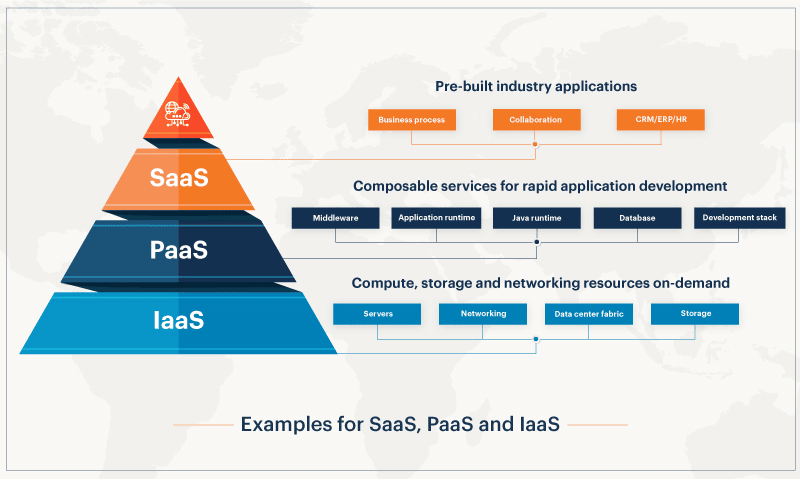
Sometimes known as infrastructure cloud services, infrastructure as a service (IaaS) provides users with cloud-based alternatives to digital infrastructures, such as servers for storage and virtualization.

Where most of these resources were traditionally located on-premises, many businesses have since adopted IaaS and similar cloud solutions to reduce costs while improving flexibility.
These benefits come from providers allowing users to “pay as they go.” As a result, companies limit their infrastructure expenses to exactly what they need while also avoiding costly in-house maintenance and upkeep.
Though these benefits are common to other cloud computing services, they’re especially impactful for infrastructure — something which often goes underutilized despite being a major in-house cost center.
But what makes for a good IaaS provider? In the next section, we’ll explore some basic characteristics shared by a solid IaaS, as well as a few examples of an IaaS in action.
Characteristics
IaaS platforms have several characteristics that set them apart from both other cloud services and traditional infrastructure. Generally, the idea is to provide better flexibility and affordability than in-house infrastructure.
- Just the infrastructure: When you use an IaaS, you’re renting a part of a server from your IaaS provider. Unless you pay for a dedicated server or rack, this means you’re sharing the same server with other users and companies paying for the same service.While that may sound a little crowded, it’s an extremely efficient way to share and allocate server resources. Rather than just renting an entire server to a single user, resources from a single server can be dynamically allocated to multiple users on an as-needed basis. In other words, no part of the server goes under-utilized, allowing IaaS providers to charge less.This model is what allows IaaS to be affordable, flexible, and scalable. Since resources are allocated virtually, getting more (or less) server space or memory is just a request away. That means you can grow and shrink your resources as your needs and requirements change. Compare that flexibility to an in-house server, which will have the same costs and limitations regardless of how much or how little it’s used.
- Accessible online by multiple users: Though every IaaS provider has a unique dashboard or interface, all of them provide their services through the internet.While this characteristic applies to all cloud services, it’s especially important to keep in mind when planning stacks or workflows based around an IaaS platform. Since using an IaaS means you’ll be accessing key infrastructure through dashboards or APIs, you may need to plan around it.Thankfully, this is mostly a major benefit. By distributing the same service through multiple interfaces, IaaS providers ensure that all users will have complete access to (and complete control over) their computing infrastructure.
- Pay-as-you-go pricing: As an extension of offering a flexible service, most IaaS providers also offer flexible pricing.Typically, most IaaS providers charge by hours of usage. This metric is broken into two major components: (i) resources consumed and (ii) hours used. As you might imagine, both of these variables are flexible, with most providers charging modest fees for both long hours of small resource consumption and short hours of large resource consumption. Here, resource consumption might be by RAM (memory) used per hour, storage in gigabytes (GB), and so on.
While the exact pricing models vary between providers, IaaS is almost always more cost-effective than maintaining your own infrastructure.
Examples
If you’ve already been shopping for IaaS platforms, you’ve probably come across one of these popular examples.
Amazon EC2
One of the earliest IaaS providers, Amazon Elastic Compute Cloud (EC2), offers scalable cloud infrastructure supported by over 77 data centers worldwide.
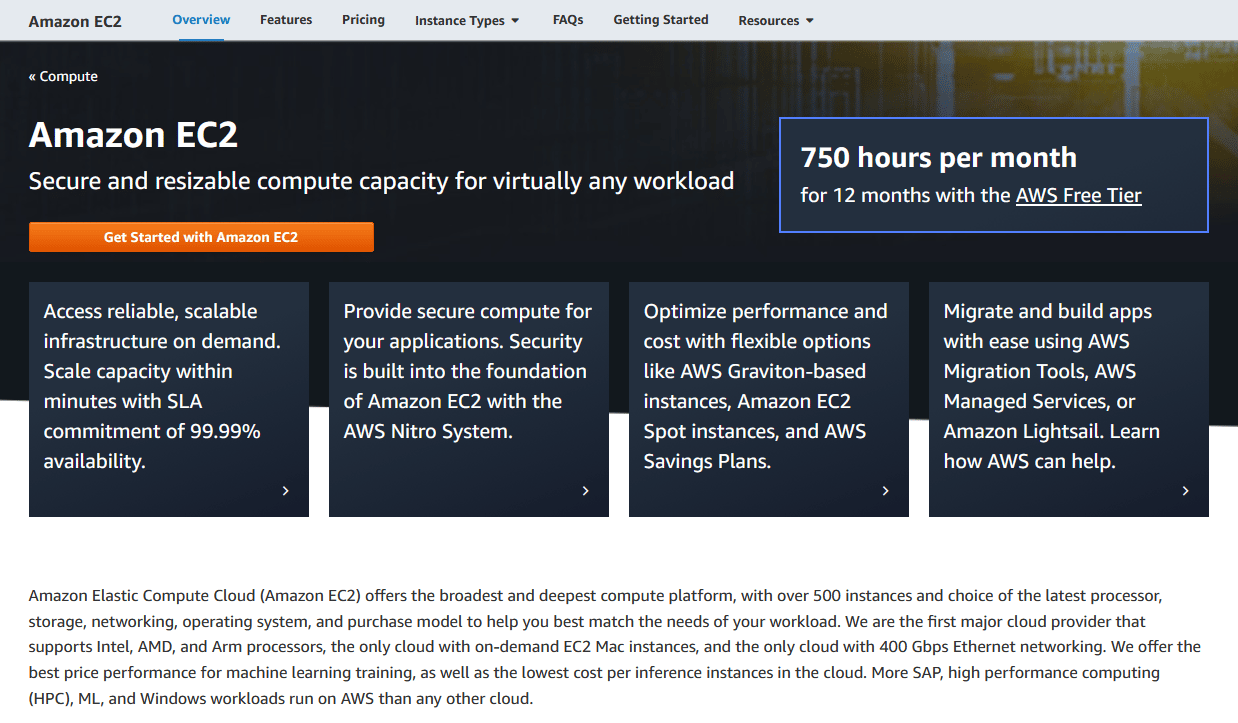
What makes Amazon EC2 an IaaS is that it provides “bare-bones” infrastructure in the cloud.
In other words, virtual server space without an operating system, software, and so on. This allows users to use and compare operating systems of their choice, and even launch multiple instances of virtual machines.
Google Compute Engine
Just like Amazon EC2, Google Compute Engine provides server space for launching virtual servers and other infrastructure in the cloud.
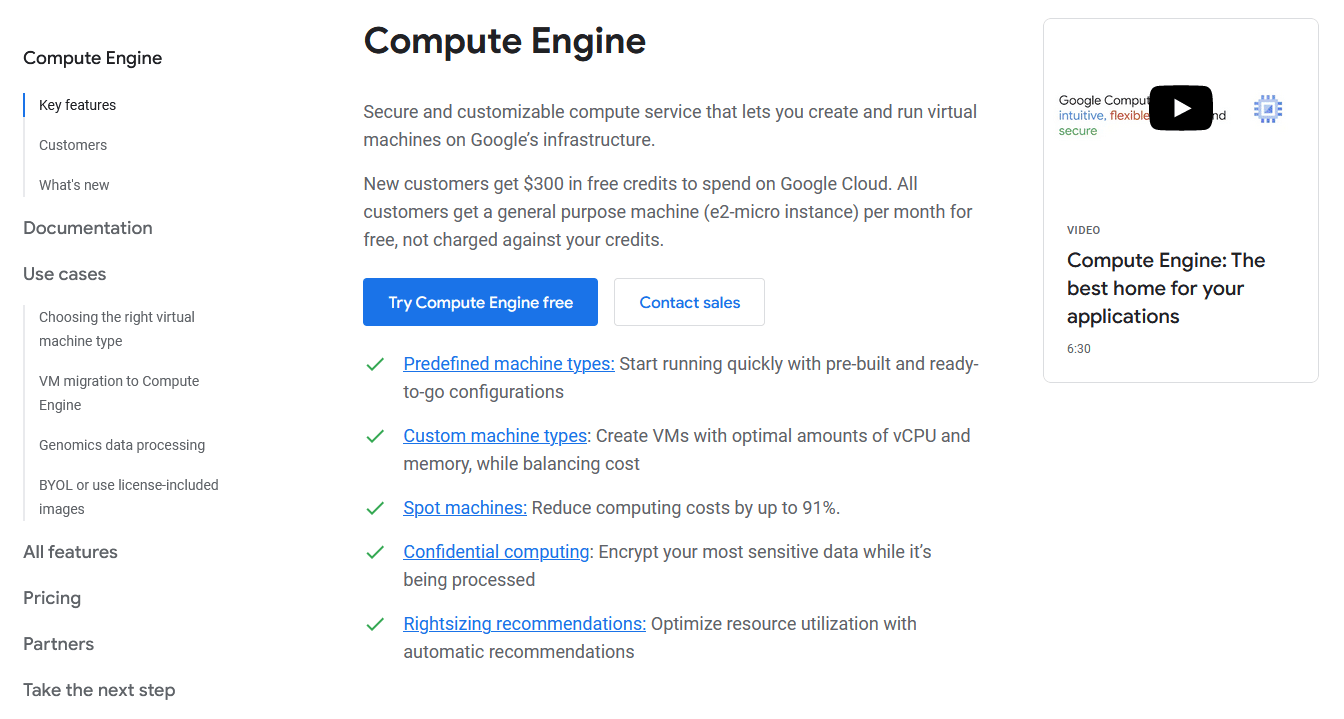
Like any other IaaS service, Google Compute Engine allows users to use their own operating systems and software to run virtual machines on Google’s infrastructure. Again, the service is “bare-bones” hardware in the cloud that users can customize to their needs.
Advantages and Limitations
IaaS provides unparalleled flexibility and scalability when it comes to setting up infrastructure. However, that doesn’t mean it’s always the right choice — nor are flexibility or scalability always the most important factors in every situation.
IaaS Advantages
Some of the advantages of IaaS include:
- Lower cost: IaaS presents many areas for cost savings. The biggest of these savings is the eliminated overhead of purchasing and maintaining physical infrastructure.For example, where a high-performance server rack might cost thousands of dollars between equipment and maintenance, IaaS has been shown to reduce IT costs by up to 79% over five years. Combined with additional savings when scaling, IaaS is often the savior of many IT budgets.
- Less maintenance: No matter how reliable, servers require ongoing maintenance to guarantee the right performance and adequate security. Though necessary, this maintenance is also very expensive, often requiring entire IT teams to manage the infrastructure.Between routine maintenance, troubleshooting, and administration, in-house infrastructure can be a massive money sink. By contrast, using an IaaS cuts nearly all of these tasks by replacing all maintenance teams with the IaaS provider.This benefit is especially impactful for companies that need to follow security mandates. Where maintaining in-house infrastructure might require countless hours of audits and compliance procedures, some IaaS providers handle all of this for you.
- More accessible: With server administration and maintenance now in the form of intuitive dashboards and APIs, you no longer need (or need to be) an IT expert to manage your infrastructure.
- Easy to scale: Whether scaling up or down, an IaaS will always provide you with exactly what you need — even if those needs regularly change. You can also replace and change existing solutions without losing money on hardware investments or time-consuming transitions.
IaaS Limitations
It’s important to also consider some of the potential downsides of IaaS:
- New security risks: Moving your infrastructure from on-site to the cloud opens some new vectors of cyberattacks. While most well-established providers have excellent cloud security, organizations should still research and track these new security threats. Since a breach of the provider’s server is out of your control, it’s especially important to establish disaster recovery and remediation strategies.
- Incompatibility with legacy systems: While most IaaS services offer a wide range of compatibility, support for legacy software is sometimes a hit or a miss. Always make sure your chosen IaaS provider can support your stack before making the switch!
- Training hurdles: Switching to a new system always comes with a learning curve. Switching to an IaaS platform means you’ll need to invest time and money in staff training.
What Is PaaS?
Where IaaS only provides virtual hardware, platform as a service (PaaS) also provides software and frameworks for building apps in the cloud.
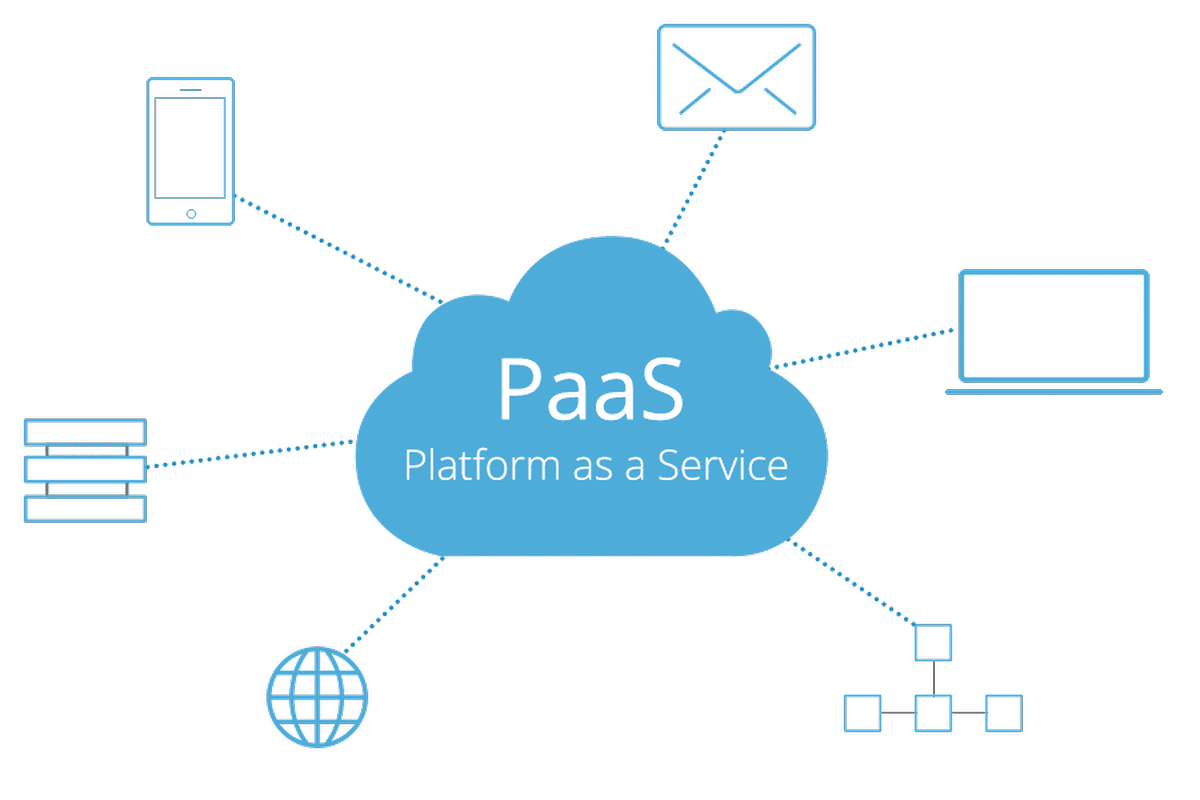
Though it might help to think of PaaS as a more comprehensive version of IaaS, it can equally be considered a different flavor of SaaS — and both assumptions would be correct.
In essence, PaaS is a sort of “middle ground” between virtual hardware (IaaS) and virtual software (SaaS) that offers the tools for building virtual software on virtual hardware.
Of course, like any cloud service, PaaS is accessible through the internet. It’s what you’re accessing that makes all the difference. Now let’s dive into the unique characteristics of a PaaS and what separates it from other cloud services.
Characteristics
PaaS platforms share many of the same characteristics and benefits as other cloud services such as IaaS. However, the general idea is to offer the same flexibility and scalability for platforms supporting apps and software.
- Flexible app development: If you’ve ever built an app or developed software, you know how important it is to test it under a wide range of circumstances. Where testing would otherwise be cumbersome using physical servers, PaaS can set up multiple environments in an instant.This characteristic is useful for many reasons. What powers this easy app development and testing is the smooth app deployment that PaaS offers. Here, where on-site servers would have to be specially configured for every deployment, PaaS allows developers to set up custom configurations and multiple deployments in an instant.As we’ll see in the next point, the flexibility of PaaS also stems from easy integration with other services. In any case, PaaS makes it easy for developers to develop by offloading the server and deployment administration to the provider.
- Service integration: As a part of app hosting, most PaaS cloud platforms also support integration with web services and databases. Whether it’s running a Java environment or integrating with machine learning frameworks, PaaS gives developers the power to build and use the environments they need.
- Pre-configured environments: Speaking of environments, setting up a development environment from scratch is one of the biggest hassles of building an app. That’s especially true if you have to develop or test across multiple environments for different use cases.While developers can definitely set up custom environments with PaaS, many PaaS platforms already come equipped with pre-configured environments. Combined with near-instant deployment, this feature makes it remarkably easy to test, deploy, and host apps without wearing out IT resources.
- Accessible online by multiple users: Like any other cloud technology, PaaS is available to multiple users through the internet. That’s a great benefit for distributed development teams, especially those who would otherwise have to connect to internal resources through remote means like VPNs. Multi-user support also helps make sure that everyone is up to date on the latest developments.
Examples
PaaS platforms have become incredibly popular as software and app development continue to boom. Here are two great examples you may have heard of (or even used).
Heroku
Built specifically for app development, Heroku is a PaaS that makes it easy for developers to build and deploy apps.
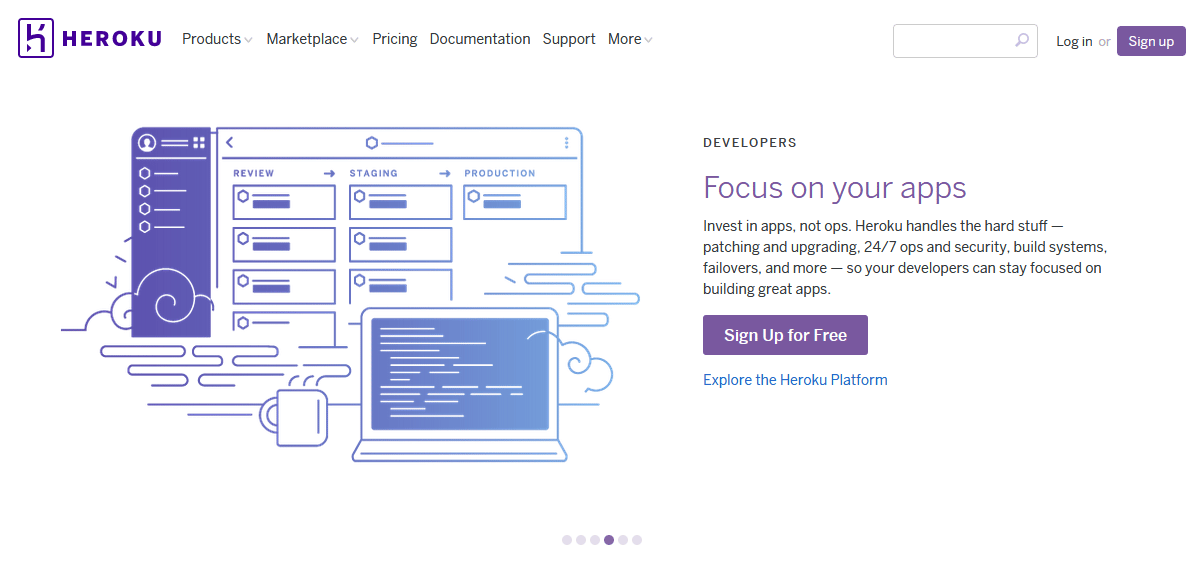
Though initially developed for the Ruby programming language, Heroku now supports almost every major language from Java to Python.
While extremely convenient for prototyping and sharing, Heroku also supports full-scale app deployments. As a PaaS, Heroku provides developers with full-scale environments without the hassle of server maintenance.
Google App Engine
Where the Google Compute Engine only provides server infrastructure, the App Engine expands Google Cloud to provide fully-equipped development environments.
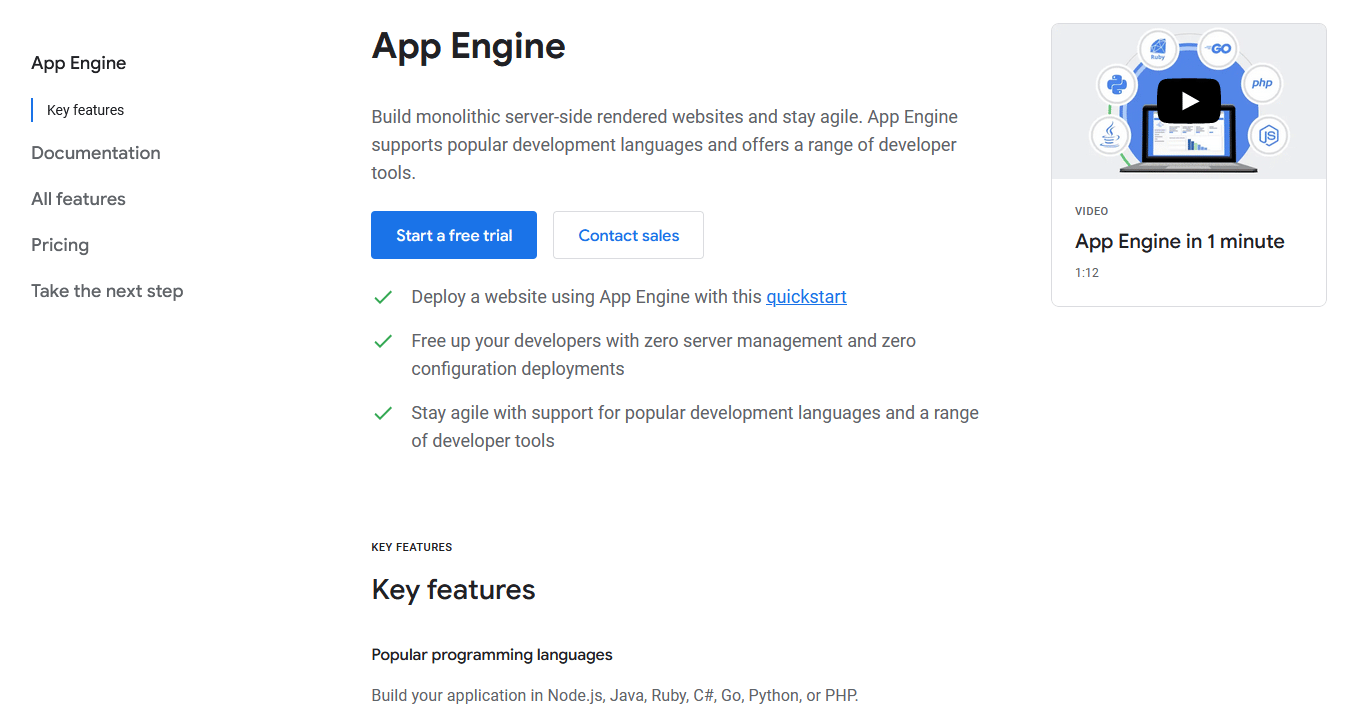
As a PaaS service, the App Engine is responsible for setting up server software and importing whatever frameworks or libraries the developer needs.
Like other PaaS services, the goal is to virtualize development environments that would otherwise be time-consuming to set up and manage using on-site hardware.
Advantages and Limitations
Like IaaS, PaaS provides remarkable flexibility and scalability. However, like IaaS and other cloud services, virtualization still has its limitations.
PaaS Advantages
Here are some of the top benefits of going with PaaS:
- Easier setup: Whether setting up a development environment or hosting a finished app, building the platform you need is hard to do from scratch. A PaaS solution won’t only set up an environment for you, but also give you the flexibility to make major changes and deploy other environments without the hard work of doing it manually.
- Quick app deployment: Beyond development tools, PaaS platforms also make it easy to host and test apps. Even Heroku’s free version allows developers to make their apps publicly available on the web (albeit with reduced processing).
- Less pressure on IT: We’ve already mentioned that building environments from scratch is time-consuming — not to mention complicated, frustrating, and resource-intensive. While many developers set up their own environments, it still requires an IT backbone when using on-site equipment. As a result, moving to the cloud also takes the pressure off IT staff and resources, allowing them to focus on more important things.
- Cost and time savings: All of the advantages we’ve discussed present substantial savings in cost and time. From avoiding the initial investment of on-site equipment to spending less time and money on long-term maintenance, PaaS is a great option for slashing budgets, saving time, and boosting performance.
PaaS Limitations
As with IaaS, PaaS has its own set of potential drawbacks:
- Data security risks: Using third-party vendors for data storage presents an inherent security risk — and PaaS platforms are no exception. Your choice of provider may also limit what security software you can use, depending on their compatibility.
- Compatibility not guaranteed: Speaking of compatibility, some applications you use may not always be compatible with your PaaS platform of choice. However, this is usually only a problem for legacy systems.
- Not always optimized: Because of their flexibility and scalability, PaaS platforms aren’t always optimized for specific languages, libraries, or frameworks. They’ll get the job done, of course, but they might not be as fine-tuned as some teams would like.
IaaS and PaaS vs SaaS
Sometimes known as a cloud application service, software as a service (SaaS) provides software over the cloud.
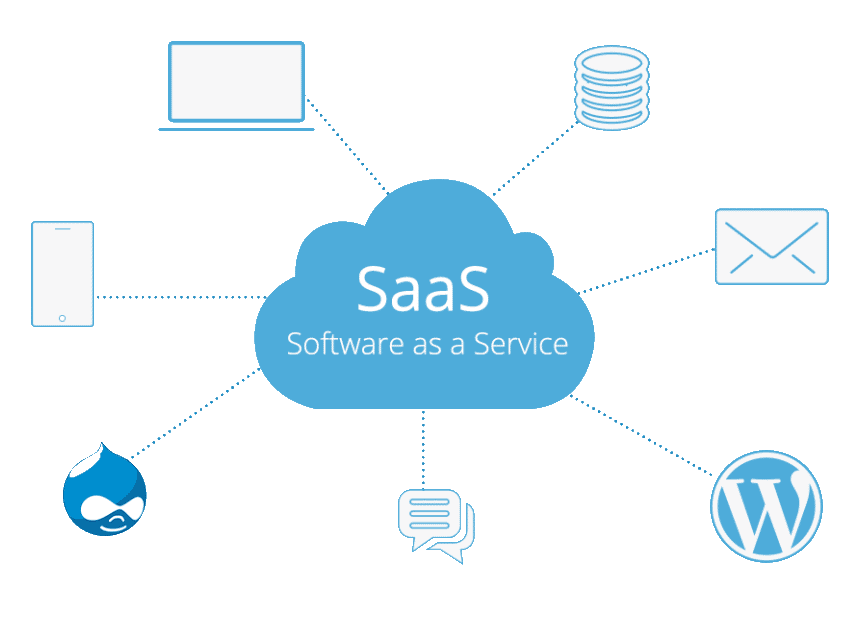
Where IaaS and PaaS both deal with servers in one way or another, SaaS only deals with hosting software and applications. Though the software is ultimately hosted on a cloud server, the server itself is already preconfigured to run it.
This means users don’t have to worry about fussy installations and device compatibility. As long as they have internet access, they can use the software.
However, because they’re managed entirely by a third party, SaaS setups inherently involve data security risks that neither IaaS nor PaaS fall victim to. Additionally, the convenience of SaaS often comes at the cost of control and customization. Depending on your provider, you may have limited customization options and even less control over operating systems, server performance, resource allocation, and other important features.
IaaS vs PaaS: Best Uses for Each
Now that you know the difference between Saas, IaaS, and PaaS, you probably have some idea which is best for your needs.
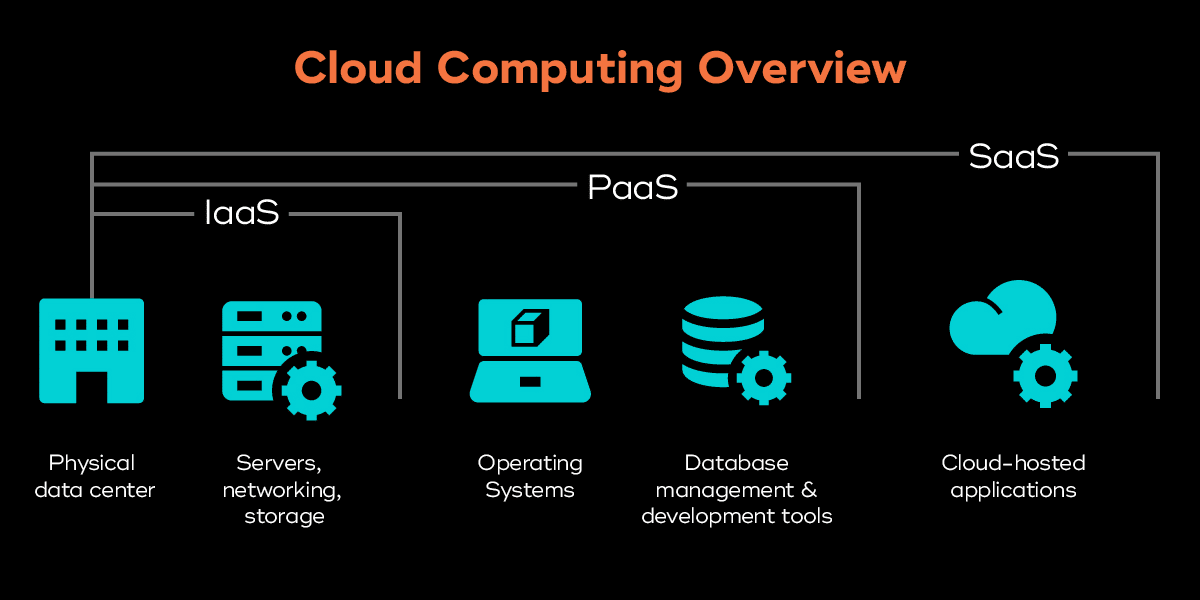
The bottom line is that one can’t necessarily replace the other. Instead, each service fills a unique role in cloud computing. As a result, the right one for you depends on what exactly you need from a cloud service.
When To Use IaaS
You want cloud infrastructure you can configure yourself. An IaaS platform helps you avoid the expensive overhead and long-term maintenance of on-site servers and other infrastructure by renting space from a third party.
When To Use PaaS
You want to develop and deploy your own apps in the cloud. PaaS makes it quick and easy to set up development environments and deploy apps through the cloud. While you can also use IaaS for this purpose, PaaS comes pre-configured for your language, frameworks, and libraries.
(And if you think these three are confusing enough, now there’s also XaaS to consider!)
Summary
IaaS and PaaS are both all excellent resources for moving your physical hardware, workflows, and tools to a cloud environment. Of course, one isn’t better than the other. Instead, each offers some unique benefits of cloud computing that the other doesn’t.
While an IaaS might seem like a great choice for web hosting, it may require more work than necessary — especially if you’re working with WordPress. With managed web hosting from Kinsta, you can get all the benefits of the cloud without having to worry about the technical side of IaaS setup and administration.
For more information, check out our application hosting, database hosting, and managed WordPress hosting plans or schedule a live demo with a Kinsta cloud expert.


